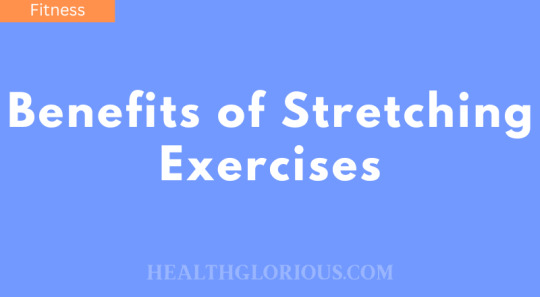#chronic disease prevention
Text
Elevate Your Diet: The Ultimate Guide to Foods with High in Fiber
Discover the benefits of a high-fiber diet with our comprehensive guide to foods high in fiber. Unlock the power of fiber and improve your health today.
Table of Content
Introduction to Fiber-rich Foods
Briefly explain the importance of fiber in a healthy diet and introduce the benefits of consuming high-fiber foods.
What is Fiber?
Define fiber and explain the two types: soluble and…

View On WordPress
#chronic disease prevention#Dietary Fiber#Digestive health#fiber and diabetes#fiber and heart health#fiber intake#Fiber Supplements#fiber-rich foods#foods with high in fiber#fruits and vegetables#health benefits of fiber#high-fiber recipes#Insoluble Fiber#legumes#Meal Planning#nuts and seeds#Soluble Fiber#Weight management#Whole Grains
0 notes
Text
Boost Your Health with These Top 10 Superfoods
Introduction
With hectic schedules and alluring convenience foods, it’s simple to neglect our health in today’s fast-paced society. However, adding nutrient-dense superfoods to our diets can significantly improve our state of health as a whole. Superfoods are full of essential vitamins, minerals, antioxidants, and other nutrients that have a number of positive health effects. The top 10…

View On WordPress
#antioxidants#brain health#chronic disease prevention#digestion#fiber#gut health#health#healthy eating#heart health#meal preparation#metabolism#minerals#nutrition#omega-3 fatty acids#quality foods#recipes#skin health#snacks#superfoods#supplements#vitamins#weight management#wellness
0 notes
Text
Benefits of Stretching Exercises
Introduction
Hello there, beloved reader! Today we’ll speak about something you may have overlooked, but is critical for your health: stretching exercises!
Before you shrug your eyes and say, “ugh, stretching is so boring,” please hear me out. Stretching exercises are not only simple to perform, but they also have numerous health and mental advantages.
To begin, what exactly are flexibility…

View On WordPress
#athletic performance enhancement#blood circulation#cardiovascular exercise#chronic disease prevention#flexibility#heart health#injury prevention#joint pain reduction#mental health#posture improvement#range of motion#sleep quality#stress relief#stretching exercises
0 notes
Text
Reishi Mushroom
Reishi Mushroom: The Ancient Secret to Immunity, Longevity, and More
I am excited to share with you the incredible benefits of the reishi mushroom. This fungus has a long and distinguished history of medical use, and for more than 2,000 years people have valued it for its capacity to better their health. During the Han dynasty, traditional Chinese healers originally used the reishi mushroom,…

View On WordPress
#allergy-fighting#anti-aging#antioxidant#anxiety reduction#beta-glucans#cancer prevention#chronic disease prevention#elixir of immortality#energy levels#immune system health#inflammation reduction#kidney complications#lingzhi#liver function#medicinal mushroom#natural remedies#reishi mushroom#sleep quality#stress relief#traditional Chinese medicine#triterpenoids#type 2 diabetes
1 note
·
View note
Text
What are lifestyle related diseases and prevention?
Yoga is an ancient form of exercise which makes the mind and body more aware, it improves blood flow and keeps you energized. Yoga involves a range of physical postures, meditation, and deep breathing techniques. It is all about coordination and connection.
There are several benefits of yoga, but most importantly it helps in prevention of lifestyle diseases, such as diabetes, asthma, arthritis, hypertension, obesity and other chronic disease prevention. These diseases are a major public health problem worldwide.
The rising cost of healthcare, the increasing health concerns has made people realize the importance of good health, good lifestyle and adapting natural ways for prevention of lifestyle diseases.

The causes of lifestyle diseases and preventive measures
Lifestyle diseases are mainly a result of smoking, unhealthy diet, and physical inactivity. It is important to note that maintaining a healthy weight, exercising regularly, following a healthy diet, and not smoking can make a positive difference. It will reduce the risk of developing the most common and deadly chronic diseases.
The regular practice of yoga can help prevent diseases such as blood pressure, diabetes and cardiovascular illness, thereby reducing the need for curative medicine. Yoga also serves as a great solution to keep chronic joint and muscle pain at bay. Yoga is further effective in treating anxiety, and depression in people.
Let us take a detailed look at the role of yoga in lifestyle diseases prevention and control -
Yoga can significantly reduce cardiovascular diseases as it includes breathing, physical activity and meditation. Adapt a healthy lifestyle to prevent heart disease, performing yoga will lessen the risk of heart diseases.
Yoga is effective in lowering blood pressure. As it involves controlled breathing, the requirement of blood and oxygen decreases and every muscle in the body relaxes. This stabilizes the nervous system and normalizes blood pressure.
Hypertension is the biggest cause of cardiovascular diseases. Yoga can help you manage the symptoms of this disease.
With certain lifestyle changes and yoga, one can enhance stimulation which results in increased blood and oxygen supply which rejuvenates pancreas’ ability to produce insulin which controls blood sugar.
Our daily life stress is another cause of lifestyle diseases. Yoga has been known for its calming effect and how it harmonizes our body and mind. Practicing yoga on a regular basis will reduce cortisol level which is the primary stress hormone.
Types of Yoga for Prevention of Lifestyle Diseases:
1. Vinyasa yoga
2. Hatha yoga
3. Iyengar yoga
4. Kundalini yoga
5. Bikram yoga
6. Ashtanga yoga
7. Yin yoga
8. Anusara yoga
9. Jivamukti yoga
#prevention of lifestyle diseases#causes of lifestyle diseases and preventive measures#lifestyle diseases prevention and control#healthy lifestyle to prevent heart disease#Chronic Disease prevention
0 notes
Text

today was the last day of my antivirals and I don't feel any covid symptoms at all. but I do feel very very very tired much like I did for months after my vaccine last november, so. that's just gonna be a thing again.
if you find yourself struggling to bounce back after the acute infection is over, look up the way cfs/me folks use pacing. in general, only aim to do half as much as you think you can to start with, and take breaks the second you notice something feels even a tiny bit not great. pushing yourself will make it worse and should be avoided as much as possible. absolutely use shortcuts, workarounds, assistive tools, and frequent breaks to make tasks more manageable and less demanding. and whether you bounce back after a week or a month or a year or never, the disabled community is here to help.
#kirby#coronavirus#daily kirby#my art#digital#hal laboratory#nintendo#also my wife's workplace let her use the cane without issue today#(in case anyone else wanted to know)#I'm very sad to have my chronic illness set back so so far yet again.#this could have been avoidable.#this didn't have to happen and I did everything I could to prevent and mitigate it.#and I don't know when or if I'll get back where I was a week ago.#because someone else I never even met didn't care enough.#it's just. really disheartening to recover and have it taken away and recover and have it taken away like. multiple times now.#and it's not acts of god or unlucky meds or the natural progression of the disease#it's discrete events someone had control of.#it is being *taken* not lost.
74 notes
·
View notes
Text
Swear to God one day ableds are gonna push us into rioting I'm getting mighty sick (literally) their shit
#I'm immunocompromised and got sick with an easily preventable disease and it turned me into a murderous bitch#ableism#eugenics#disability#chronic illness#cripplepunk
5 notes
·
View notes
Text
Long-Term Health Tips - Managing Chronic Care
Chronic diseases are the primary cause of death and disability, impacting millions of people worldwide. Long-term health conditions necessitate ongoing management.
However, chronic disease management is a complex issue. Preventing and managing chronic diseases often requires people to adopt healthier lifestyle choices like diet, exercise, and habit changes.
Adjusting an already packed schedule can seem daunting. However, with the right approach, navigating these illnesses becomes manageable. It helps you maintain your health and happiness.
Today, we will assist you with taking charge of your long-term health strategies. We will explore the complexities involved and stress the role of preventative healthcare. By the end, you will feel ready to manage your long-term health actively.

Understanding Chronic Disease Management
Chronic illnesses are long-lasting ailments that require continuous medical care. Examples include diabetes, heart disease, and arthritis. Chronic disease management focuses on controlling symptoms, minimizing complications, and enhancing quality of life. For instance, individuals with diabetes may find solace in supplements like Satvam Nutrition Advanced Diabetes Care Supplement alongside traditional medicine to manage their condition.
Chronic disease management focuses on:
Controlling symptoms
Minimizing complications
Enhancing quality of life
Remember, this is a collaborative effort between you, doctors, and specialists. Receiving thorough and efficient care entails following a customized holistic care approach. Effective chronic disease management can help you live an active life and lower complications and sudden hospitalizations.
Accepting Holistic Care Approaches

Traditional medicine is often used to manage chronic diseases. However, holistic care approaches focusing on physical, mental, and emotional well-being are becoming increasingly popular.
These include acupuncture, meditation, and nutritional supplements. They complement traditional medicine and help individuals manage their chronic conditions effectively. Satvam Nutrition Advanced Heart Care Supplement helps to keep blood pressure at bay. Another example of a targeted supplement, Satvam Nutrition Piles Care Supplement, is really helpful for those suffering from piles.
Always discuss complementary therapies with your healthcare provider to ensure they do not interfere with any ongoing treatment plan.
A holistic care approach can help contribute to a more balanced and satisfying life as it explores different angles.
Implementing Preventive Healthcare Measures
Preventive healthcare is the most essential component of thwarting and managing chronic diseases. Research estimates that early intervention could avert about one hospital admission out of every fifteen
Frequent examinations are vital to diagnosing health problems early. Focusing on preventive healthcare measures is a proactive approach to improving health.
Practical Tips for Long-Term Health Strategies
Patient empowerment is central to successful chronic disease management. Staying informed and controlling one's health leads to better long-term outcomes. Patients who actively participate in care plans designed for them experience better results. For individuals with prediabetes, Satvam Nutrition Pre-Diabetes Care Supplement is a potent natural approach towards a healthy life.
Let's check some practical tips to manage chronic illness using holistic care approaches.
Focus on Regular Check-Ups
It is recommended to schedule regular check-ups with your doctor at least once a year.
Regular check-ups enable early detection of health issues, which is essential for maintaining good health.
Early detection of health issues can help you adjust your treatment plan based on the results, leading to better outcomes.
Maintain a Healthy Lifestyle
Focus on your daily habits as it impacts your chronic disease management.
The main focus should be a diet rich in fruits, vegetables, and whole grains.
Aim for at least thirty minutes of vigorous activity on most days of the week.
Consult a doctor or dietitian for personalized guidance tailored to your specific needs.
Getting enough quality sleep, around 7-8 hours per night, is essential for health and well-being.
Prioritize Stress Management
Incorporate stress-reducing activities into your daily routine.
Practice mindfulness meditation or deep breathing exercises.
Engage in hobbies or activities you enjoy to unwind and relax.
Knowledge is Key
Educate yourself about your specific chronic condition.
Use reliable sources like patient education websites or preventive healthcare provider resources.
Don't hesitate to ask your doctor questions to gain clarity in managing your health.
Building Your Support System
Surround yourself with your family, friends, or even a chronic disease support group network.
Talking about your condition and seeking emotional support improves your mental well-being.
Sharing experiences with others who understand your challenges can be invaluable.
Set Realistic Goals
Always be realistic while setting goals for lifestyle changes, keeping in mind your chronic condition.
Break larger goals into smaller, manageable tasks to track progress effectively.
Celebrate achievements along the way to stay motivated and focused on long-term health strategies.
Adjust goals as needed based on changes in your health or circumstances.
Maintaining Consistency is Key
Make sure to follow your doctor's prescription and recommendations diligently.
Adjust dosages or skip medications only after consulting your doctor.
Skipping medication can worsen your condition and lead to complications.
Track Your Symptoms
Try to identify the typical signs and symptoms associated with your chronic condition.
Keep a symptom journal to track any changes. Discuss them with your doctor during appointments.
Conclusion
Taking control of a chronic illness can be life-changing. Work with your medical team, prioritize your health, and seek support. Remember to be proactive and seek more knowledge about your condition. Doing this will help you take charge of your health and live a fulfilling life. Satvam Nutrition, a trusted brand for holistic wellness supplements, offers a range of plant-based nutritional supplements, like Satvam Advanced Joint Care Support Supplement, which makes living with chronic conditions easier.
#chronic illness#chronic disease#Long-term-health-strategies#Holistic-care-approaches#Preventive-healthcare#Patient-empowerment#holistichealth#holistic health
3 notes
·
View notes
Text
An Overview on the Perks of Using Nutraceuticals

If you are looking for these supplements, you can locate Nutraceutical Third Party Manufacturing India.
#Nutraceutical Third Party Manufacturing#Nutraceutical#Third Party Manufacturing India.#nutraceutical contract manufacturers#benefits of nutraceuticals#boosts energy#relieving anxiety#improves mental clarity#overall health#prevents chronic diseases#dietary supplements#supplements#diet
10 notes
·
View notes
Text
Annual health screenings or physicals are a crucial element of preventive care. It encourages the early detection of health issues before they develop into problematic medical conditions or difficult-to-address health issues. Here are some more advantages of getting an annual health screening you may not have known about:
0 notes
Text
Obesity A Disease More Dangerous Than Diabetes and Heart Disease

Individuals who do not suffer from diabetes or heart disease but are overweight need immediate attention to lose weight for the sake of their lives. Becouse obesity a disease more dangerous than diabetes and heart disease. Read more
#health and wellness#exercise#Obesity Awareness#Health Risks#Enlarged Stomach#Chronic Diseases#Weight Management#Disease Prevention#Public Health#Lifestyle Choices#Health Education#Obesity Epidemic.
0 notes
Text
Nursing Quiz
Here is a short quiz covering general nursing skills. See how you do. Answers will be posted at the end, but don’t cheat. Take the test and do your best! Good Luck!!
Question 1
A nurse is caring for a patient who just underwent surgery. The patient reports a pain level of 8 on a scale of 1 to 10. Which of the following actions should the nurse take FIRST?
A. Administer the prescribed…

View On WordPress
#acute care#chronic condition management#communication skills in nursing#critical thinking in nursing#disease prevention.#ethical principles in nursing#evidence-based practice#fluid and electrolyte balance#Health#Health care#health promotion#Infection Control#medication administration#Nurse#nurses#Nursing#Nursing assessment#Nursing Care Plan#oxygen therapy#pain management#patient advocacy#patient education#Patient Safety#Registered nurse#team collaboration#wound care
0 notes
Text
To prevent and manage obesity, a comprehensive strategy including a balanced diet, consistent exercise, and lifestyle modifications is required. Nutritionists, exercise instructors, and other healthcare professionals can provide invaluable guidance in managing and reducing obesity for improved overall health and quality of life.
#obesity#BMI#Body Mass Index (BMI)#chronic diseases#5 Ways to Prevent Obesity#preventing obesity#Health
0 notes
Text
Exercise Medicine – Heart Disease: Manage Symptoms, Improve Quality of Life When Living with HEART DISEASE
4th in a Series of Living with Chronic
Conditions.
Exercise helps those individuals with long-lasting, chronic conditions manage symptoms, improving their quality of life.
Long-lasting, chronic conditions include cancer, heart disease, diabetes, depression, and back / joint pain.
Many experts now believe that exercise can be a very effective way of preventing chronic diseases and reducing symptoms. Regular exercise not only can help prevent the onset and development of cardiovascular disease but also is a critical therapeutic tool to improve outcomes for those with heart disease.
As a bonus, exercise also works to improve one’s mood, appetite, and sleep!
As we age, exercise becomes more and more important. Regular physical exercise helps maintain:
balance, reducing falls and fractures
independent lifestyle
stamina, muscle strength
mood, well-being.
healthy bones, muscles, and joints.
A sedentary lifestyle increases the risk for conditions that can lead to negative health issues, even causing early mortality.
Waistline – to decrease waistline girth, increase exercise. Enlarged waist circumference is linked to extra risk of:
cardiovascular disease
developing insulin resistance
high blood sugar.
How does exercise strengthen the cardiovascular system?
Regular exercise helps the heart; it can lower the risk of heart disease getting worse and it lowers the risk of dying of heart disease. The heart is a muscle and responds to exercise by becoming stronger. Enhance cardiovascular health with regular exercise to:
improve circulation (pumping blood throughout the body)
make the heart stronger
help prevent disease: high blood pressure, cardiovascular disease, type 2 diabetes, metabolic syndrome, early mortality, etc.
Exercise training should include: Aerobic; Strength/Resistance; Flexibility.
When exercising, particularly for aerobic exercises like walking, swimming, or cycling, the heart must pump more blood through the body, increasing cardiac output and blood pressure.
Over time, as individuals adapt to the healthy stress that exercise places on the heart and body, the heart becomes stronger and it takes fewer beats to push blood through the body, leading to a lower heart rate.
Exercise also alters the lipids in your blood, increasing HDL cholesterol (the “good” cholesterol), while reducing triglyceride levels, both of which reduce the risk of heart disease.
Exercise also improves arterial function, reducing blood pressure and thickening the ventricular chamber walls of the heart.
Multiple research studies have shown the benefits of exercise in preventing and reversing heart disease:
Individuals who are the most physically active have heart disease rates 50% lower than those who are sedentary.
Heart attack patients who followed a formal exercise program experienced a reduced death rate of 20-25%.
If you’re not active now, gradually work up to an aerobic session of about 20 to 30 minutes, at least three or four times a week. The more exercise you can do, the better.
Anything that raises your heart rate counts. Pick a variety of activities that you like. Don’t do the same thing over and over.
Exercise Regularly. It is important to exercise on a regular basis. The type of exercise that is best for you depends on age, injuries (past and present) and health conditions. Each exercise session should include a warm-up, conditioning phase, and a cool down.
Older adults should participate in at least (see table below):
Type of Exercise -- How Often (per week) -- Duration (per session)
moderate aerobic -- 5 days -- 30 minutes
OR
vigorous aerobic -- 3 days -- 20 minutes
Resistance training
(muscle strengthening) -- 2 days to 3 days -- 20 to 30 minutes
Flexibility and Balance -- 2 days (or daily) -- 10 minutes
More is better: Exercising more than the minimum recommendation results in extra health benefits and increased fitness. Increase workouts gradually.
As always, check with your doctor before beginning any new exercise routine. Participate in exercises designed to be safe and challenging for older adults.
Workout Tips:
Pace yourself.
Don’t do too much too soon.
Give your body time to rest between workouts.
Stay hydrated. Drink water even before you feel thirsty
Stop and rest if you feel weak, dizzy or lightheaded
To stay motivated for exercise, follow the link below: https://nancylfitness.com/2022/10/07/motivation-to-exercise/
#heart disease#disease prevention#symptom management#chronic disease#exercise medicine#nancylfitness#fitness coach#personal trainer#certified personal trainer#senior fitness coach#senior fitness trainer#senior#senior health#senior exercise#fitness coach online#personal trainer online#senior fitness
0 notes
Text
https://www.secondmedic.com/blogs/5-simple-ways-to-prevent-and-manage-diseases
#disease prevention#disease management#healthy lifestyle#vaccination#good hygiene#chronic conditions#staying informed.
0 notes